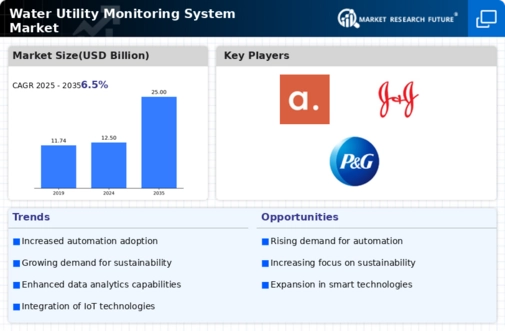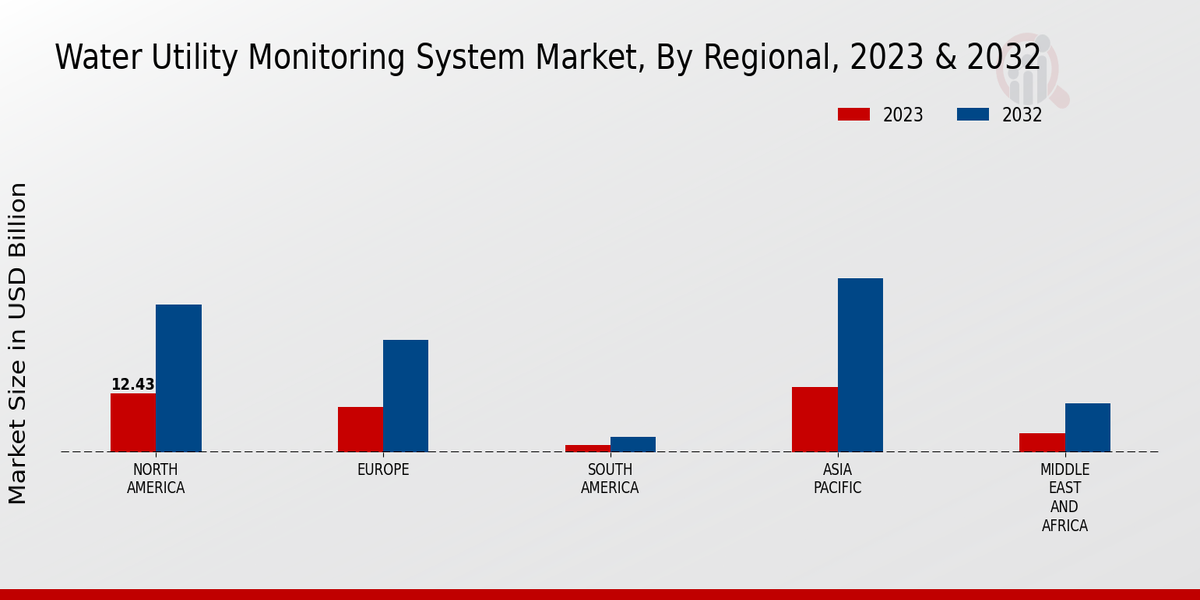Rising Urbanization
The rapid pace of urbanization is significantly influencing the Global Water Utility Monitoring System Market Industry. As urban populations swell, the demand for efficient water management systems intensifies. Cities are increasingly adopting smart water solutions to address challenges such as leakage detection and demand forecasting. For example, cities like Singapore have implemented comprehensive water monitoring systems to ensure sustainable water supply amidst growing urban demands. This trend is expected to bolster market growth, as urban areas seek innovative solutions to manage their water resources effectively.
Regulatory Compliance
Stringent regulations regarding water quality and conservation are driving the Global Water Utility Monitoring System Market Industry. Governments worldwide are enforcing laws that require utilities to monitor and report water quality metrics, compelling them to invest in sophisticated monitoring systems. For instance, the European Union's Water Framework Directive mandates regular assessments of water bodies, prompting utilities to adopt advanced technologies. This regulatory landscape is likely to contribute to the market's expansion, as compliance becomes increasingly critical for operational sustainability.
Increasing Water Scarcity
The Global Water Utility Monitoring System Market Industry is experiencing growth due to the escalating water scarcity issues worldwide. As populations expand and climate change exacerbates water shortages, utilities are compelled to adopt advanced monitoring systems to manage resources efficiently. For instance, regions like California have implemented smart water management technologies to optimize usage. This trend is projected to drive the market value to 12.5 USD Billion in 2024, as utilities seek solutions to mitigate the impacts of dwindling water supplies.
Market Growth Projections
The Global Water Utility Monitoring System Market Industry is poised for substantial growth, with projections indicating a rise from 12.5 USD Billion in 2024 to 25 USD Billion by 2035. This growth trajectory reflects a CAGR of 6.5% from 2025 to 2035, driven by factors such as technological advancements, regulatory compliance, and increasing urbanization. The market's expansion is indicative of the critical role that monitoring systems play in ensuring sustainable water management practices globally.
Technological Advancements
Rapid technological advancements in IoT, AI, and data analytics are propelling the Global Water Utility Monitoring System Market Industry forward. These innovations enable real-time monitoring and predictive maintenance, enhancing operational efficiency. For example, smart meters equipped with IoT capabilities allow utilities to gather data on water usage patterns, leading to better resource allocation. As these technologies become more accessible, the market is expected to grow at a CAGR of 6.5% from 2025 to 2035, potentially reaching 25 USD Billion by 2035.
Public Awareness and Engagement
Growing public awareness regarding water conservation and sustainability is impacting the Global Water Utility Monitoring System Market Industry. Citizens are increasingly advocating for responsible water usage, prompting utilities to adopt transparent monitoring systems that provide real-time data on water consumption. Initiatives such as community engagement programs in Australia encourage residents to monitor their water usage, fostering a culture of conservation. This heightened awareness is likely to drive demand for advanced monitoring technologies, as utilities strive to meet public expectations and enhance service delivery.















Leave a Comment